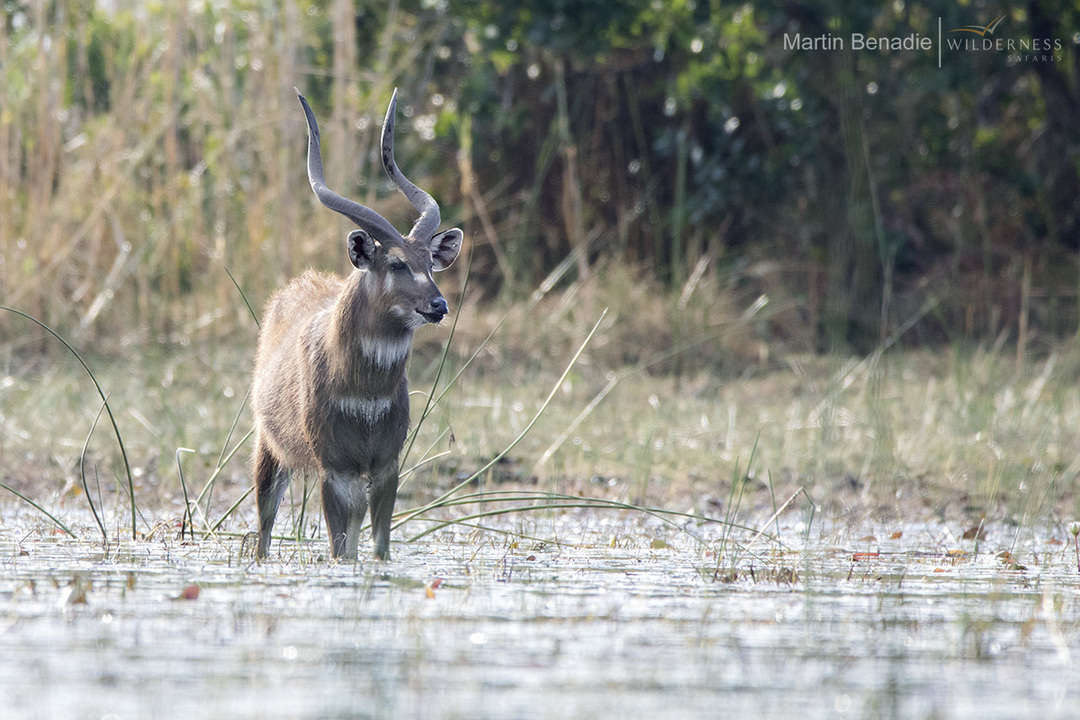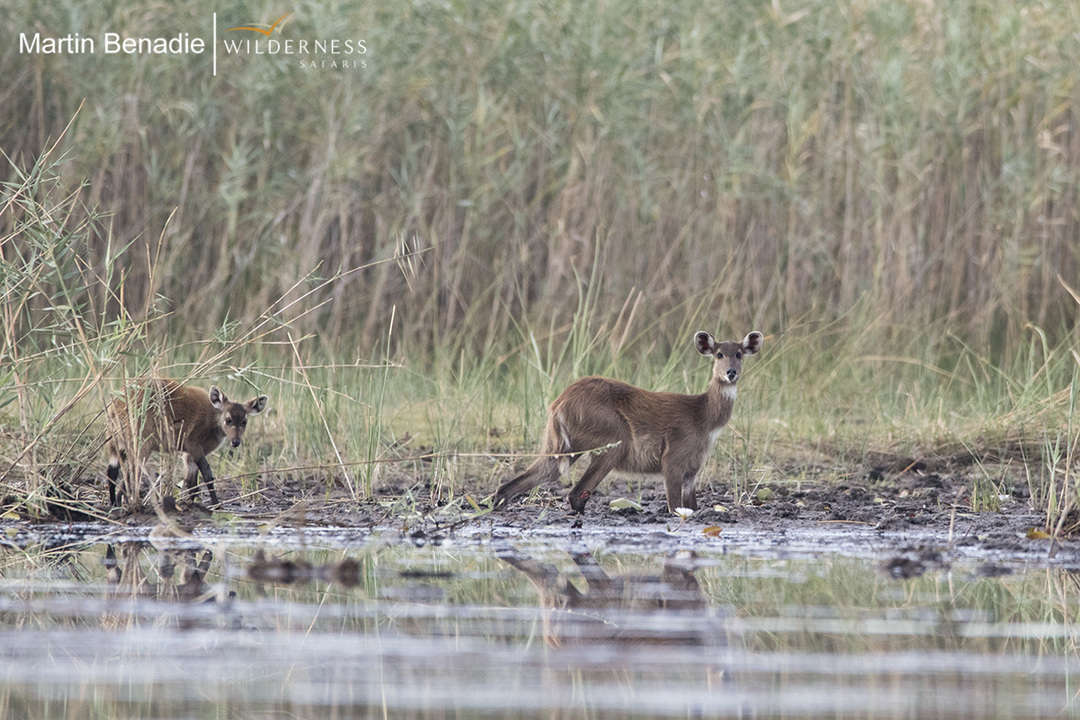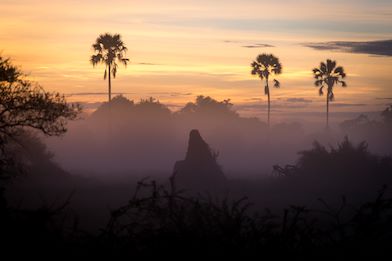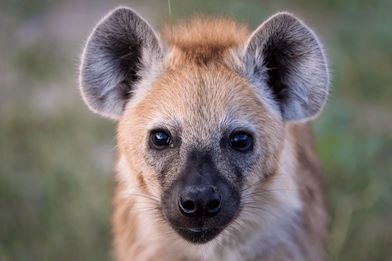Sitatunga Tragelaphus spekii is a swamp recluse restricted to the larger wetlands of south-central Africa. Often very hard to see, I was amazed (ok, stunned) at the incredible encounters we had with this species in Botswana's Okavango Delta recently – and more specifically on the Jao Reserve. Jao offers a window into the heart of the Okavango Delta, and a labyrinth of unspoilt watery channels and floating beds of interconnected papyrus and phragmites reeds. The result? Prime sitatunga habitat.
Yet, even in perfect habitat, sightings of this swamp antelope are not guaranteed. To this end, we set out by mokoro from Jacana Camp one early morning in December with the hope of possibly seeing a sitatunga. In wilderness, nothing is guaranteed after all, and one does need a dose of luck. It was a perfect, still morning and the Delta’s inhabitants’ were just awakening to another day in paradise. Our expert poler, Gee, steered us quietly along a shallow waterway to an area where we stood a better chance at locating sitatunga. Nervous anticipation all around. As we glided along, totally at one with our surrounds, a myriad waterbirds were seen in close proximity, mostly unperturbed by our presence, while red lechwe foraged nearby.

Suddenly, Gee exclaimed ‘sitatunga’, and pointed out an adult male, albeit quite hidden in the reeds. Its form was distinctive and a sighting nonetheless. I was pumped! Our morning was made, I thought. But there was to be more. Much more. Poling along, we reached another open floodplain area and there, feeding right in the open, was another female sitatunga and her offspring. INCREDIBLE! We were elated. The hornless females are consistent with other tragelaphines, having distinct dorsal stripes (not as apparent in the adult female pictured below). One young is born in thick vegetation and are initially kept hidden. This youngster was probably quite independent already however, but still keeping close to his/her mother.

Sitatunga are perfectly adapted to their watery existence: their uniquely splayed hooves facilitate quiet foraging amongst floating reed and papyrus beds, their longer hind legs give better balance in the wet, and their shaggy coat has water-resistant properties. They can also avoid attention by fully submerging in water, leaving only parts of their head exposed.
But Gee saved the best for last. Entering another quiet inlet, we then spotted two adult male sitatunga, in their prime, feeding right on the water’s edge. Gee masterfully poled his mokoro into position, allowing some amazing views and low-level shots, before these males became aware of us and retreated back into denser vegetation. These males were far larger than the females seen earlier, and had impressive horns and bulk. Thanks Gee for a sighting (and experience) of a lifetime! It seems luck was on our side this morning too.







